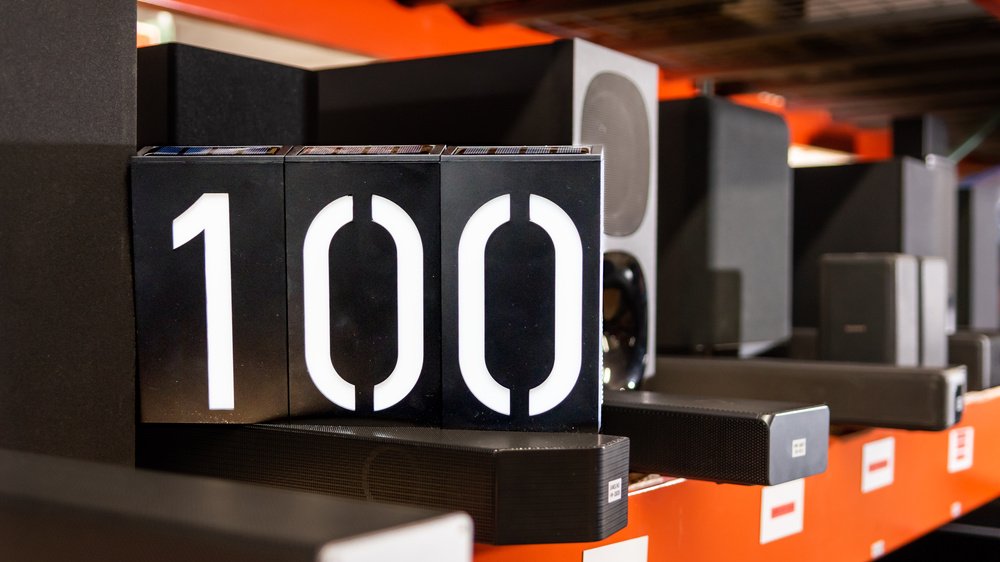
Our pick of the best budget soundbars will help improve your home audio without breaking the bank
If you’re searching for a cheap way of improving your television’s audio, our advice is simple: buy the best budget soundbar you can afford.
Soundbars can elevate the quality of your telly’s sound significantly and, best of all, you can pick one up for a fraction of the cost of your fancy 4K TV.
We’ve tested numerous soundbars across a wide range of price points, and this article lists what we consider to be the best of them available for under £300.
The best budget soundbars may lack some of the bells and whistles offered by pricier models, but all of the options on this list have one thing in common: solid sound quality at an affordable price.
If you don’t know your 2.0 from your 2.1, or simply want to learn more about the features you can expect to find in a budget soundbar, we’ve put together a handy buying guide detailing everything you need to know before making a purchase.
How to choose the best budget soundbar for you
There are a number of things to consider when shopping around for the best budget soundbar. Top of your priority list should be sound quality. If a soundbar doesn’t significantly improve your TV’s audio, there’s no point in spending your hard-earned cash on it.
Audio quality is affected by a number of factors, including the size and type of speaker drivers used, the audio formats supported and the number of audio channels a soundbar incorporates.
How many channels should a budget soundbar have?
The number of channels present in a soundbar is represented by two digits separated by a full stop. The first digit reflects the number of primary channels, while the second indicates the presence of a subwoofer to handle low-end frequencies. So, a 2.0 soundbar possesses two audio channels – left and right – while 2.1 bars add a third via a subwoofer.
Subwoofers are sometimes built into soundbars, but many come as separate units included in the price. Both types have advantages: soundbars with built-in subwoofers are more space-efficient, while standalone subs generally deliver fuller, more impactful bass.
Rarer at under £300 are soundbars with three or even five primary audio channels. A 3.0 or 3.1 soundbar features a central channel in addition to left and right ones and is generally better at delivering dialogue compared with its 2.0 and 2.1 counterparts. Meanwhile, 5.0 and 5.1 devices add a further two channels to create a surround-sound effect and really ramp up the immersion.
Those additional channels are most commonly incorporated via rear speakers connected to the soundbar wirelessly or with cables. You do sometimes find “all-in-one” 5.0 and 5.1 soundbars where everything is housed within a single bar, but you can expect to pay more than £300 for one of those.
How important is power output for a budget soundbar?
Most manufacturers state the peak and average (Root Mean Squared or RMS) output of their soundbars in watts (W). Larger soundbars with more speaker drivers are capable of outputting bigger sound than their compact competitors but don’t worry too much about finding a bar with massive audio output.
The least powerful bar on this list, the Roku Streambar, is able to fill a reasonably sized room with sound.
What’s the best way to connect a soundbar?
Even budget soundbars offer a range of connectivity options and, generally speaking, the more ports present, the better.
The easiest way to hook up a soundbar to your TV is by using an HDMI cable. Ideally, both your TV and soundbar will have HDMI ARC (audio return channel) ports and, assuming they do, you simply connect the two to enable your bar to play audio from your TV and any devices connected to it. Some soundbars feature additional HDMI inputs, which are useful for connecting external devices such as games consoles or a Sky TV box if all of the ports on your TV are already in use.

Other things to consider before buying a budget soundbar
Think about what size soundbar suits your television setup best. You’ll want to make sure it fits in your AV cabinet and slots neatly in front of or under your TV without obstructing your view or getting in the way of any infrared sensor your telly may have.
If you plan on wall-mounting your soundbar, ensure that your chosen device supports mounting and comes with the necessary accessories to facilitate this. Many do, but it’s worth checking.
EQ options and different audio modes are also worth keeping an eye out for. A lot of soundbars will let you tweak the bass and treble, while others offer audio presets tuned for watching specific types of content such as music, films or sports. If you watch a lot of TV in the evening and don’t want to disturb the neighbours, a Night mode designed for low-volume viewing is particularly handy.
More advanced soundbars offer support for surround-sound audio formats such as Dolby Atmos or DTS:X. These multidimensional, object-based codecs are capable of adding height effects to a soundbar’s soundstage for a more immersive audio experience, but you’ll typically require additional speakers to make full use of them.
You may also come across DTS Virtual:X, which seeks to recreate a surround-sound experience without the need for those additional speakers, making it a great inclusion in budget soundbars.
How we test the best budget soundbars
When testing a soundbar, the first thing we focus on is the process of setting it up. Typically, that will mean placing it in front of a TV (or monitor), connecting it to a power source and the input source via included cabling or HDMI cables if not provided in the box.
We’ll go through all of its different connectivity options – Wi-Fi, Bluetooth, HDMI, stereo, optical etc. – and then proceed with assessing its sound quality across each supported method, across whatever channel configurations are possible, using a range of audio sources.
